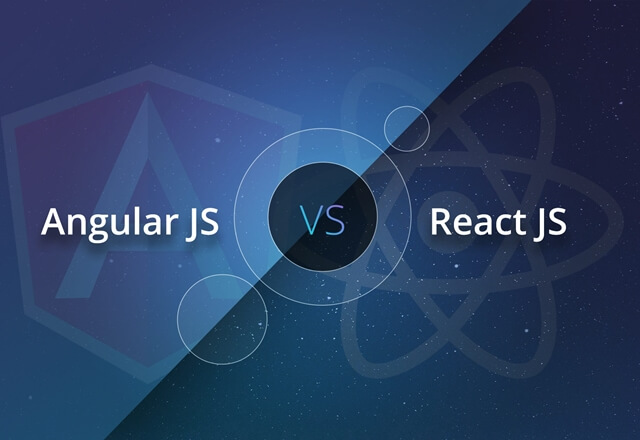Angular and React are two of the most popular front-end frameworks for developing websites and applications. Each framework has specific strengths and learning what these are will help you decide which framework to use for different types of projects.
When making a technical decision, you must decipher which technology has the characteristics that best fulfill your clients’ technical and business needs.
Balancing Complexity with Final Results
“There are three responses to a piece of design – yes, no, and WOW! Wow is the one to aim for.” – Milton Glaser
After reflecting on the above quote, I realized this concept could be applied to all types of design, including software.
No matter the technology you decide to use, it is important to elicit the “wow” response in end-users. So, you can achieve success with either Angular or React as long as the framework you choose responds to user demands.
However, it is also important to consider (or consult) your software developers when deciding what technology to use.
When choosing between the Angular and React frameworks you should always consider the following:
- final product each framework is capable of producing
- how complex the framework is to use by front-end developers.
In a specific project, one framework may produce good, but not astonishing results, and will still be considered an option if it is easier to use than the other. The balance between complexity and final results must always be considered.

Angular and React are both advanced, widely adopted JavaScript technologies used for creating interactive single-page applications.
Angular and React: Comparing Frameworks
Defining the Frameworks:
Angular:
Angular is an open-source JavaScript framework meant to help developers build modern applications. This framework was created with 3 key concepts in mind: modularity, testability, and maintainability.
It follows an MVC (Model View Controller) software design pattern. Typescript came into use starting with version 2 of Angular and is a superset of JavaScript that compiles to plain JavaScript for any browser, making it an attractive choice to everyone.
React:
Developed by Facebook, React is an open source JavaScript library used for building user interfaces. The main architecture of React is focused on building encapsulated components that manage their own states. In order to create these components a developer has to use a special syntax called JSX (to create classes and templates) which allows coders to mix HTML with JavaScript in a dynamic way. React offers more freedom than Angular, but this freedom comes at the cost of spending additional time designing an application’s structure.
The Learning Curve:
Angular:
The learning curve is somewhat similar for both Angular and React, but overall Angular is usually considered trickier to learn. Learning Typescript is not easy if you don’t have an OOP (object-oriented programming) background, or if you are unfamiliar with dependency injection and design patterns like Abstract Factory.
React:
React often requires coders to learn a few new things as well, such as JSX (JavaScript superset). It is possible to use React without JSX, however JSX syntax is elegant and makes certain structures easier to code. Also, React is only a view layer, some additional libraries need to be configured and used in order to set up a traditional MVC framework.
User Base:
Angular:
Angular seems to have lost the overall popularity contest if we take a look at Google trends. However, popularity is not the only factor that counts when comparing frameworks. The user community, which includes things like GitHub collaborators and online documentation is also important and Angular still has a large & dynamic community. This community support makes the coding process easier, both new and experienced coders can benefit from each other’s knowledge.
React:
React has been producing quite a buzz among developers. Even if it is newer, it has a rapidly growing user base that already consists of a big community of developers who offer a lot of support.
Performance:
When it comes to performance, Angular and React are locked in a tie. Both frameworks can be used to create high quality products.
Conclusion
One can understand from the above comparison that each framework has its own set of characteristics that are better at fulfilling specific needs. In most cases it is possible to decide whether React or Angular is the better choice. You just need to consider the strengths of each framework and decide which one best fulfills your project’s needs.
For example, if you need to make a business application where accelerating time to market is crucial, Angular, a framework that functions “right out of the box”, may be the best choice – see the project we did for our client, Aktan.
React has its place in projects where a strong user interface is one of the defining features of the product.
Of course, these two examples are both oversimplifications. There is a wide range of projects and business considerations that when combined will favor one framework over the other. If you need help choosing between Angular or React or have already decided and need developers, we can launch your project in two weeks.
We’re looking for Front End developers, check out our jobs listings:

 (23 votes, average: 4.48 out of 5)
(23 votes, average: 4.48 out of 5)







